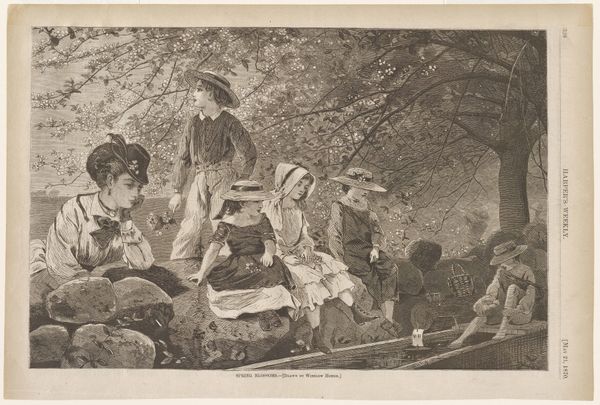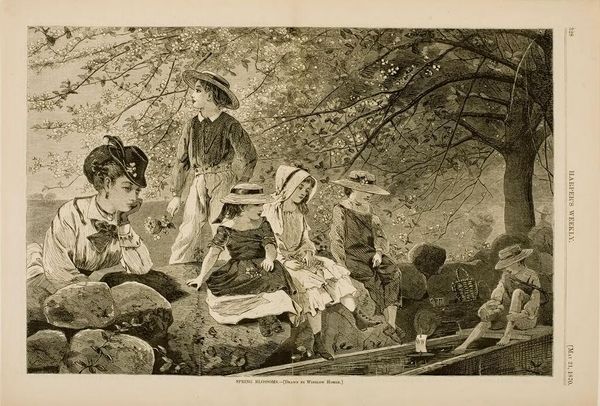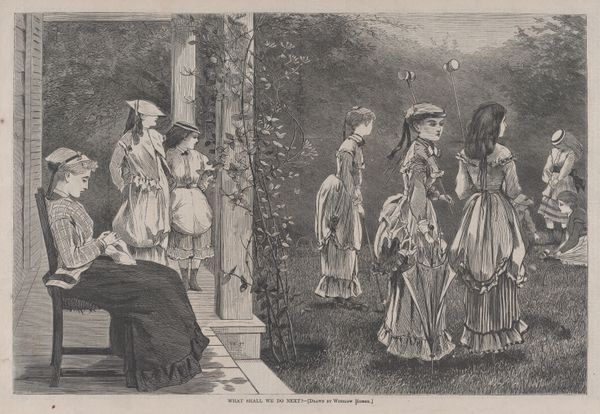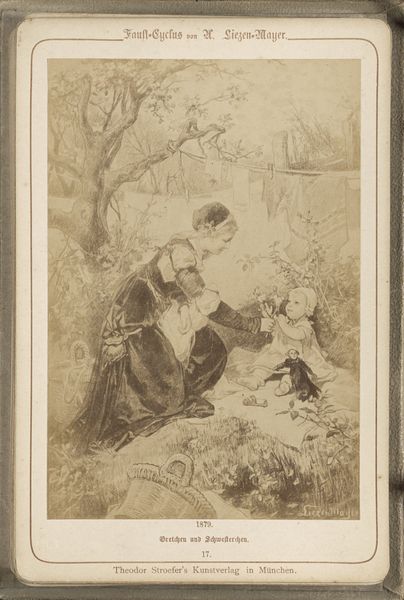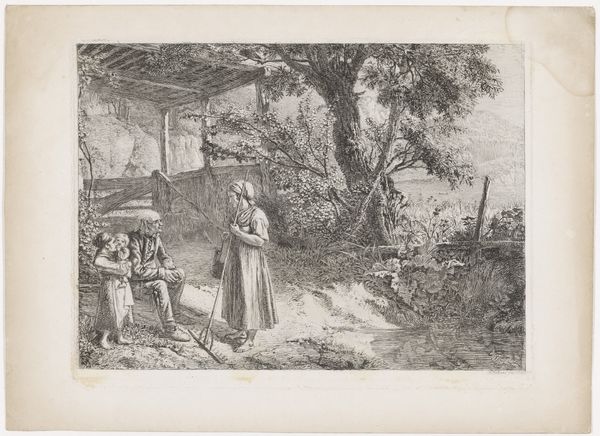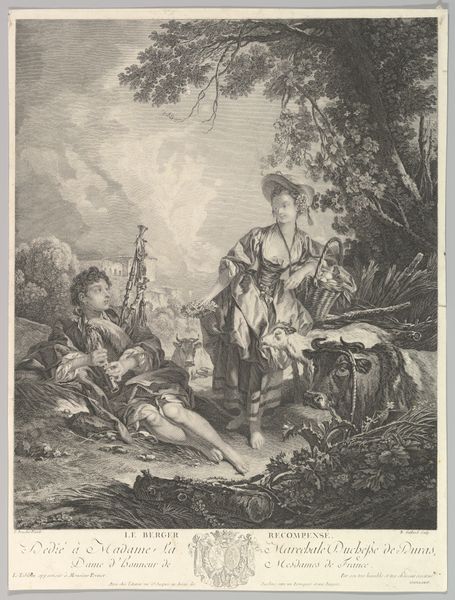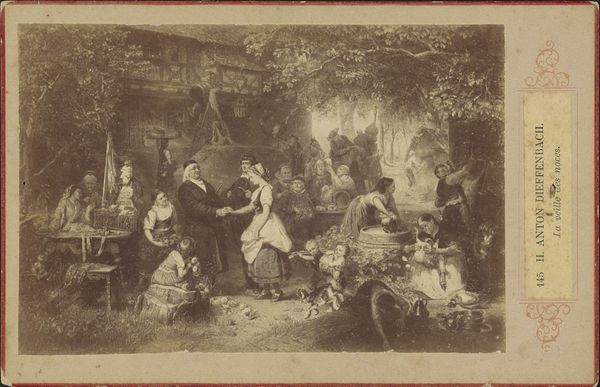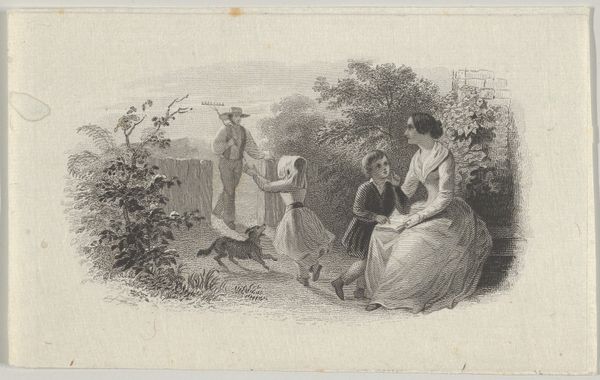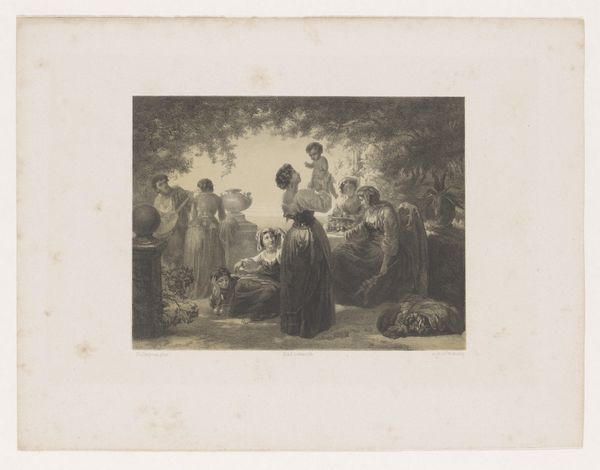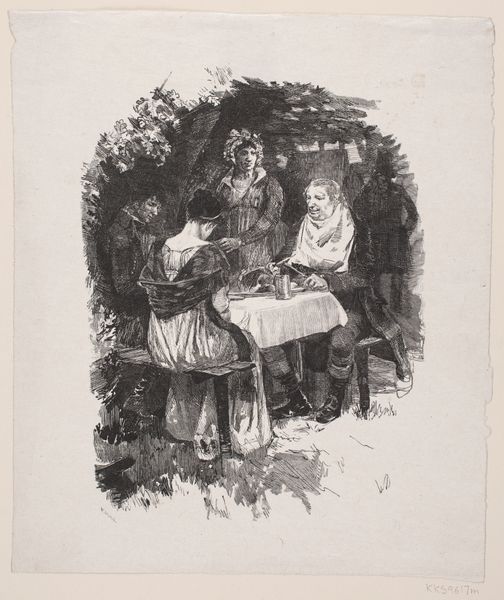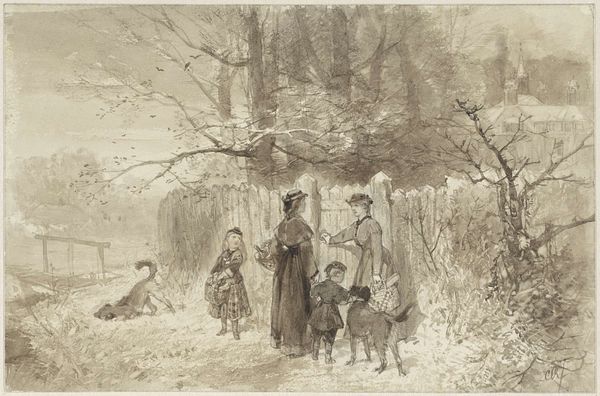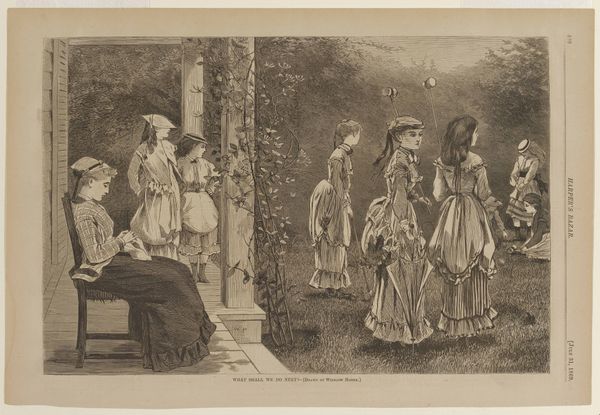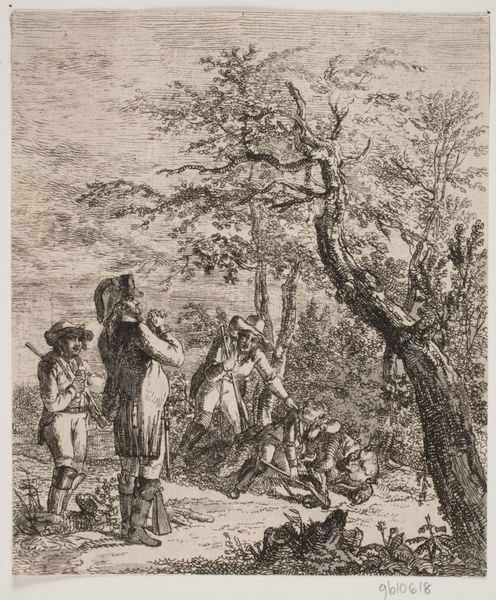
Spring Blossoms (from "Harper's Weekly," Vol. XIV) 1870
0:00
0:00
drawing, print
#
drawing
# print
#
landscape
#
figuration
#
pencil drawing
#
genre-painting
Dimensions: image: 9 1/8 x 13 7/8 in. (23.2 x 35.2 cm) sheet: 10 11/16 x 15 15/16 in. (27.1 x 40.5 cm)
Copyright: Public Domain
Curator: Oh, this one's a beauty! Right now, we're looking at Winslow Homer's "Spring Blossoms," which appeared in Harper's Weekly back in 1870. It's a print, but there's a delicate touch to it. Editor: It’s like stepping into a daydream… a muted symphony of light and shadow. I’m immediately struck by how serene and almost melancholy the gathering of figures feels, despite the promise inherent in 'spring blossoms.' Curator: Exactly. Notice how he plays with light and shadow using closely spaced pencil lines? It gives the entire piece this shimmering, ethereal quality. The figures are almost emerging from the floral backdrop itself, a lovely little grouping of kids. Editor: It's clever, that dance between dark and light – visually compelling, no question, but does it also signify a deeper commentary? Homer presents to us this almost academic rendering, like in an early photograph that renders color depth a muted affair… but does he push that further than mere observation of children resting beneath tree cover? Is it possible to apply a layer of depth beyond the immediately present subject matter and setting? Curator: Perhaps there's something to that reading. Homer often imbued his seemingly straightforward depictions of American life with layers of unspoken emotion and implication. Think about how, post-Civil War, America was undergoing radical reconstruction, in both cultural and physical ways. Maybe these children are reflective of a time of recovery, or maybe hope—as suggested by springtime itself—waiting to burst open fully. I could almost imagine these kids here dreaming about the future, whatever that will become for them. Editor: See, to me, the emotional core is far less grandiose— I’m sensing something far simpler: innocence. Purity, untainted views, an insular haven formed between childhood friends in shared silent thought, which I find, and am not ashamed to say, touching. I get pulled into it! That the setting here is under blossoms suggests this as not just idyllic, but a potent symbolic reinforcement of youthful newness. The material qualities in their respective garb; I find it impossible to suggest some other symbolic intent that has broader political leanings! It's gorgeous as a mere capturing of moments—it’s almost perfectly set as is without assigning other considerations! Curator: Fair enough! We are drawn to what we see in these scenes... whether a wistful contemplation of a post-war era, or even simply as nostalgic reflection on youth itself, Homer leaves plenty of room to decide, to ponder, doesn't he? Editor: And ultimately that is the heart of it – both approaches provide interpretive lenses for greater thought—well put, curator, and what I can only imagine will continue to inspire audiences far from the trees and blossoms themselves.
Comments
No comments
Be the first to comment and join the conversation on the ultimate creative platform.
